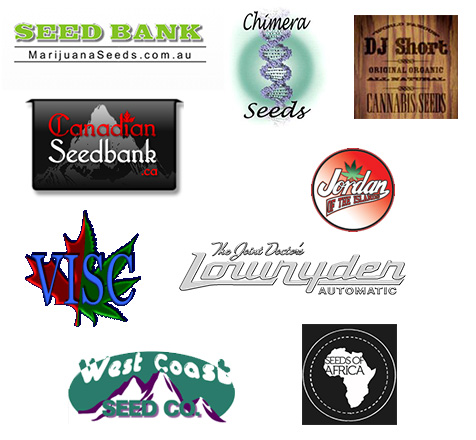INSTALLATION
Location
We must find a suitable location, if used over an entire room as the climate control is more difficult than with a closet. Best rooms on lower floors, central rooms or north wall rooms so the sun does not add more heat; consider the supply of light, water and air that we also need, with closet is more flexible, but better if in a room like those discussed.
You should seek the minimum measures of the grow room for us 60cm x 60cm x 80cm at least. If rooms provide space to work in the culture also.
Equipment
To the question of air in the crop must have two opposites fans, oscillating better, in cultures of two or more meters long better to add more fans.
For air extraction must calculate m3 of crop, multiplied by sixty (since you have to clear the air once a minute) and half will add 25% more, because you have to count on curves, filters and meters of tubes that cause inefficiency in the extractor.
An example:
- Closet of 1.2m x 1.2m x 2m
- 1,2x1,2x2 = 2,88m3 culture volume
- 2,88x60 = 172,8m3 per hour to evacuate
- 172.8 + 43.2 (25% +) = 215m3 / h recommended (unless you use more than 5-8m tube, in which case we must add 15% per meter of tube)
- You have to choose the pump that is just above, in this example, one of 260m3 / h would be perfect.
- The intraction should be a 25% of extraction or so, it's okay if it is 30-40%.
- In closets less than 1m x 1m base is not essential intracción.
The light must be calculated in cuttings and shoots with three fluorescent 30W/m2 we have plenty.
Plants growing and active mother plants with low consumption 250W is enough (to keep mother plants doing cuttings 150W serve). In advanced growth (3-4 weeks) ideal are metal halide (MH) of 400 W/m2.
To bloom the ideal are high-pressure sodium (HPS) 400-600W/m2 (can reach 1000 W/m2 with supply of CO2 (see optimization of culture)).
The MH and HPS must be changed every four cultures.
In all cases it is advisable that the lights come on whenever the real night.
For irrigation, water "base", which always leave for any watering, fertilizing or not, should have a pH of 6.0 and an EC of 400μs/cm 2 (0.4) starting forever.
GERMINATION AND ROOTING OF MARIJUANA
Germinating seeds
Perhaps in the process of cultivation, is the easiest step. They can be planted directly into the substrate taking ten to twelve days to sprout, but the germination rate is diminished.
The most successful method is as follows:
- First hydrate the seeds. Place them in a glass of water ranging from 20º-25ºC (keep temperature until them sprout) and add a teaspoon of hydrogen peroxide, care, more is not better and leave one day in complete darkness.
- The next step is to move them to a wet paper napkins, not soggy (if we dip a spray will be easier). We can put them between two plates or in an airtight jar to prevent drying, but still dark.
- We will be checking twice a day or so, wet napkins if necessary, when the incipient root measure more than one cm moisturize jiffys, rockwool, ... with water with pH of 6.0 to 6.4 and EC of 400μs (0.4) with a few drops (2-3 per liter) of rooter and we will make a hole in the middle where the seed will be putted with the small root forward (down).
- Then we put them under a soft light (100W of low consumption as much), better in a greenhouse, with a photoperiod of 24 hours light or 18h/6h and humidity of 70-80%.
- When leaving the pair of fake leaves (the round ones are the cotyledons, the following sawn but a leaflet (tip) are the first false) and you can apply growth lighting, starting from long distance and slowly bringing it until they are seedlings (when does the first pair of true leaves, three leaflets (points)), when the distance should be about 25-30cm.
Rooting
To find out how to cut the cuttings see "Reproduction".
Take the cutting from the glass of water and make a cut at the tip on 45º and clean the next two knots from cut, if the stem is thick, you can scrape the stem with a scalpel to help rooting hormones (please liquid) which apply with a small brush without exceeding (just move the brush from clean knots to cut).
Then nail in the chosen medium jiffy, coconut ... previously hydrated with water at pH 6.0 to 6.4 and EC 0.4. Cut off the tips of the larger leaves and put them in a greenhouse, spray water on top and walls so that the room does not fall below 80-90% humidity and 22 ° C ronde (no heated blankets for such use).
keep cuttings this way for about five days, in which once a day, clean up the greenhouse and spray clean water. Give them the same lighting schedule that the seed sprouts.
From the fifth day we can go slowly opening the greenhouse until the tenth day or so, we should see the new roots below.
From there they are ready for transplanting to pot and growth lighting (applied gradually like we do with the seedlings).
START CULTURE
First of all you have to choose the variety, usually looking to the size of our interior, especially in the beginning when we do not know to control pure Sativas, choose small or medium varieties and if we plant more than one variety, not advisable thing to be novel, choose similar in size and flowering time.
Before germinate seeds must test all equipment without plants and check that everything works correctly, and then, germinate.
We prepare the greenhouse and fluorescent, if we have closet to germinate, check the temperature and adapt to receive the Jiffys.
Of course the grow room is freshly cleaned and we will have prepared 1L containers or so, to receive Jiffys with young plant.
After this phase there will not have time to make changes in culture, so that corrections must be done now.
GROWTH
This part covers since we put the Jiffy with young plant in the small pot until we change the photoperiod with the final pot. At this stage the photoperiod is 18 hour light / 6 dark (18/6), the temperature will be maintained at 24ºC and humidity between 60% -70%.
After five days from sprouting the plant can be putted in the small container with light substrate (not need many nutrients) and will put under a spotlight of HM, first maximum distance bringing it slowly until one week is already 20-25cm to seedling.
We should irrigate with water and rooting and nothing else. With Ph 6.0-6.2 and EC of 0.6 at most.
In about 10-15 days (when plants have 7 knots) may be transplanted to their permanent pots with pre-potting soil, watering yet as specified above.V
When the plant is 4 weeks or so (eight knots) can be applied the fertilizer for growth and consider changing the photoperiod to flowering. It is also a good time to clean the plants of leaves and lower branches, below the third knot roughly.
BLOOM
This is the longest phase covers since we changed to 12/12 photoperiod until harvest.
The temperature will be roughly 26ºC and humidity between 40% -50%,no more no less.
VThis is the last chance to prune the lower branches before it comes into bloom.
VIt starts with irrigation water and fertilizer growth (rooter is removed) with a pH 6.0-6.2 and an EC of 0.6 up to 0.8 when showing the pre-flowers. Then will substituting gradually growth fertilizer for flowering fertilizer until the 5th-6th week of flowering, when we stop the growing fertilizer.
From here you go up the EC to 1.6-1.8 and Ph to 6.2-6.4.
You can add Bloom's enhancer (Bloom), but not essential.
When you are 1 week-10 days to harvest (see harvest), there will be a washing roots (water three times normal liters with pH of 6.2-6.4 and 0.4 EC as long) and continue watering with water alone until harvest, is normal and desirable in this last week older leaves die.
REPRODUCTION
Cannabis plants can be reproduced in two different ways.
Sexual reproduction is common in nature, pollen from the male plant pollinates the flowers of the female plant. We can do it leaving them together, or we can select the parents, in this case it is better than males are well insulated. We can collect pollen with a plastic bag placed on top of a branch with flowers and then put the bag on a branch with flowers of the female plant, or with a brush pollinating the plants that we want.
Once pollinated female plants will leave them mature beyond what would stop if we wanted for smoking, drying them as if they were smoking.
Once seeds recovered (the buds can be smoked anyway), leave they finish drying for six months in the dark without heat or moisture. Then we can plant or store in refrigerator well protected from light and moisture for years.
The other way is asexual reproduction, by cuttings.
This is most useful to keep that plant that we love so much, for example.
The cutting or cuttings (best prepare twice as we need, as some will die and others will be weak) are removed from a growing plant. Before cut the cuttings, the mother plant will be fertilized slightly and little nitrogen and irrigate it well so hydrate well the plant, branches with 2-3 knots at least will be cut with a scalpel or sharp knife well disinfected with alcohol. The branches will be put immediately in a glass of water with pH 6.0 and CE 0.3, when we left all of them will let 18-24 hours into dark.
This done, the cuttings will catch one by one and you will cut 45 ° at the cut end and the instructions on the "rooting" section will be followed.
OPTIMIZATION OF CULTURE
It's called an optimized crop when all limiting factors are optimized, ie, light is needed, temperature and humidity are constant and the values of suitable applicants irrigation water has the Ph and perfect EC at all times and plants are not subjected to any stress. In the other sections is explained which are the appropriate values in each phase.
Once the environment and plant food is the best, in the flowering stage, you can enrich the air with CO2 (there are various models of generators for this purpose). With a concentration of 900-1000 parts per million (ppm) of CO2 will suffice.
Under these conditions can upload them the room temperature to 28º-30ºC, the light output to 1000W / m2 of HPS and food to an EC of 2.0-2.4 to washing of roots, it is good to stop add CO2, lower lighting 400W / m2 of HPS and lower 20º-22ºC daytime room temperature until harvest.
HARVESTING, DRYING AND CURING
The harvest time is decided to everyone's taste. From a minimum maturity that with the magnifying glass, you can already see some amber trichomes, or without, more than 50% of pistils have changed color, is harvestable, if you wait more indica varieties are more narcotic and sativas balance their psychoactivity.
Once chosen the moment there are several ways to cut and dry; can be hung or entire branches, face down, with or without large leaves or put in a dryer with the same variants. The important thing is to be a dark, cool, dry, ventilated (not much) place, depending on the leaves that have left, take between 15-30 days to dry. The optimum conditions are about 20 ° C and 50% humidity, being highly recommended not exceed 25 ° C temperature and 60% humidity or lower than 30%.
We will know that is dry because it creaks bend a stalk rather than bend, at this moment pass to cure for excellent aroma and the complete evolution of cannabinoids.
To cure serve glass jars or wooden boxes unvarnished, best cedar, fill the chosen container and leave it in darkness, opening it 1-2 times a day during the first month, then we will leave a minimum of three months, it's recommended six months and already you can store in airtight container and / or smoke or make various preparations.
DATA OF ORGANIC FARMING
The cannabis plant is a plant that does not stand out precisely because of the strength of its roots, doing it ideal for hydroponic and aeroponic cultivation, but it loses, from our point of view, great flavor and essence of biological products; if we demand vegetables without pesticides and fertilized with natural products, if we look for the meat we eat has been fed with natural feed or that they will not put antibiotic for nothing, we advocate marijuana planted on the ground and fed with organic manures and if outdoor, better.
The organic farming is slower and less productive than in cultures without substrate or inert substrate, but we thought that the way to make by nature has its reason for being, and thus, recommend us.
Everyone is free to grow as you want, but there is only one way that Mother Earth does and has not done anything wrong without us, the humans.
If we choose the best organic substrates, the best natural fertilizers and pay attention to the signs of our plants will reward us with a product of a unique quality.

















